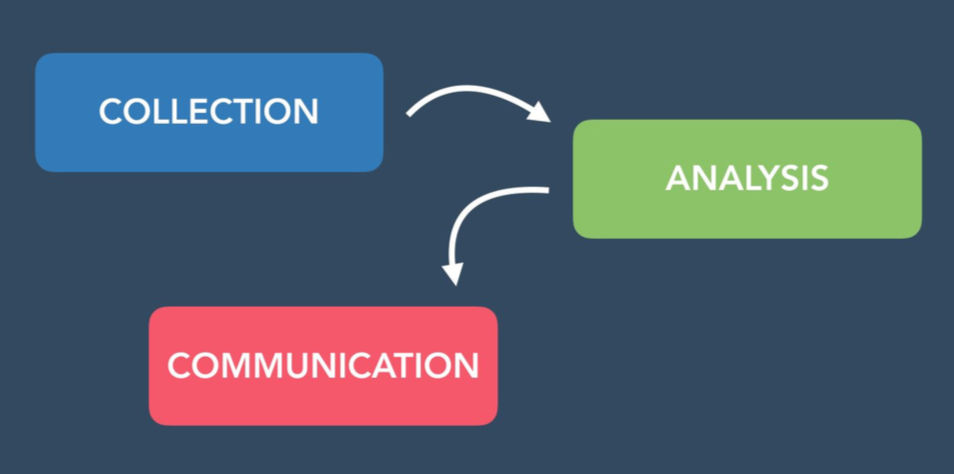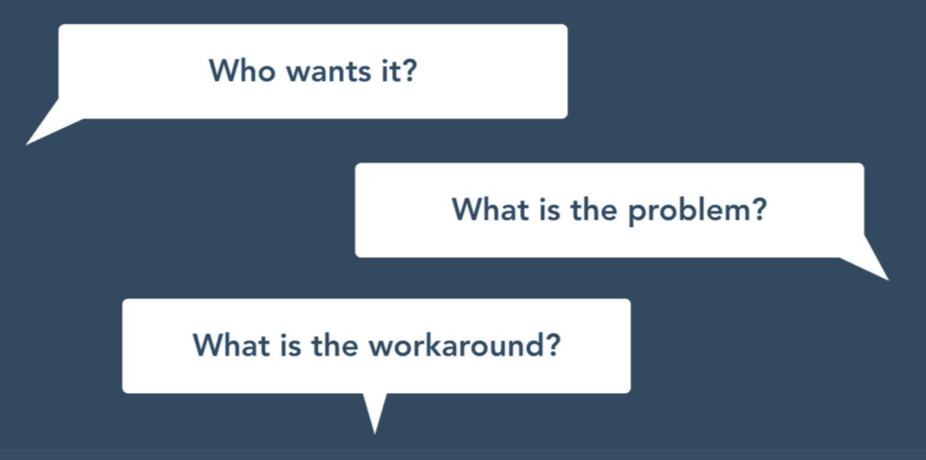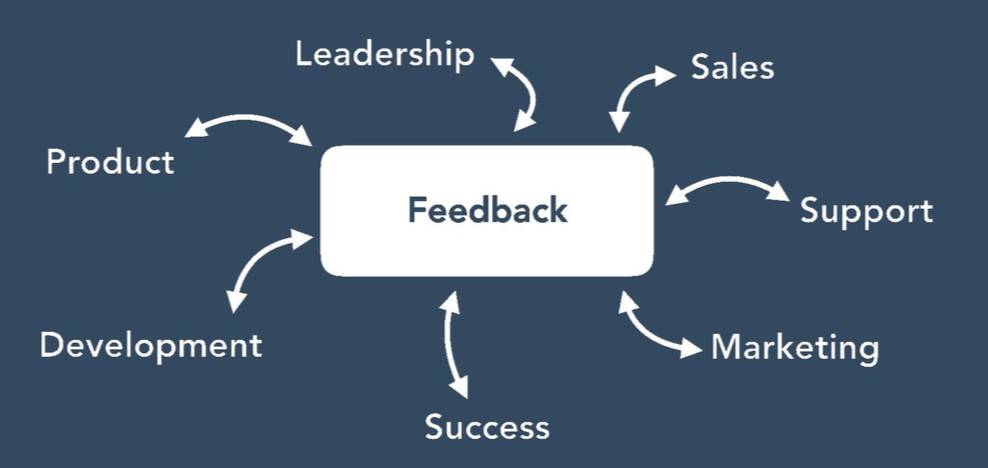Contents
Introduction
There’s an old myth that ostriches bury their heads in the sand in an attempt to hide from predators. It’s not true, but it became the origin of the phrase “bury one’s head in the sand”. As in, ignore the problem and hope it goes away on it’s own.
When it comes to feedback, a lot of organizations seem to bury their heads in the sand. Often, this is because they didn’t put provisions in place from the start. They end up with feedback all over the place, with no way of actually analyzing it, and let’s face it - it’s easier to ignore it and hope it all goes away.
But, as you probably know, missing out on the insights feedback provides is a surefire way of having a stagnating product that doesn’t do what your customers want it to. That leads to churn. That leads to the eventual collapse of your company. It’s scary stuff, and it’s no wonder you want to take the ostrich’s lead and bury your head in the sand.
Unfortunately, burying your head in the sand actually makes things worse. Inaction is the worst way to deal with your feedback problem. It’ll still grow bigger and bigger, you just won’t be able to see it. This guide is designed to provide a way out of the hole. We’re here to show you that, rather than panic and ignore it, you can tweak your process and start managing feedback effectively.
The Audit
If you want to fix the problem, you need to know what’s causing it. That’s product management 101, right? You know this already. So you need to conduct an audit of how you currently manage feedback.
There are three main parts of any feedback process, and chances are your problem lies with at least one of them. Those three parts are collection, analysis, and communication.

Someone in your organization needs to take ownership of the audit and investigate each part of the process, identifying any issues.
For each part, there are several common problems that we see SaaS companies run into time and time again. So let’s take a section at a time and explore solutions to those problems.
Collection
1. Not Enough Feedback
It might be the case that you aren’t receiving enough feedback to be able to use it effectively.
In a way, this is the easiest problem to solve as it doesn’t necessarily require any major tweaks to your process.
You need to make it as easy as possible for customers and team members to provide feedback. If they have to go on a wild goose chase to get to a form then they probably won’t bother. If they can’t self-serve and provide feedback whenever they want, then they probably won’t bother.
So, decide how you’re collecting feedback. Is it a Typeform survey? A dedicated email address? Or a software solution like Receptive? Then, once that’s set-up, tell people about it. Reach out to customers and make them aware that you want their feedback, and this is how you do it.
The easier you make it for them, the more likely they are to do it.
2. Feedback Is Spread Out
Another common problem we see with collection is that you have so many avenues of feedback that you end up not being able to consolidate it all. This means you can’t analyze it effectively.
The good news is, at least you aren’t short on feedback. The bad news is, this will take a bit of work to sort out.
Firstly, you need to settle on how you want to collect feedback. Choose one of your current options. The one that brings in the most feedback makes sense. Then, prevent users from providing feedback to the other options.
Now, you need to transfer all of the feedback from those other methods over to the one, single method you’ll use from now on. For example, if you have a load of feedback in emails, but you only want to use a survey, add the email feedback to the survey database.
The only time you should have multiple streams of feedback is if they’re easily linked together. For example, a Receptive customer can have feedback input into Zendesk and Salesforce, and then send that feedback to Receptive with a click of a button. That stops the feedback from being separated.
Ultimately, your feedback needs to be in one place if you’re going to analyze it effectively.
3. The Wrong Kind of Feedback
A final issue you might have with collection is that you’re collecting the wrong information. This means your Product team don’t actually end up with the data they need to make decisions.
Here’s a handy list of the information you should be collecting at a minimum:
-
Who wants it?
-
What problem are they trying to solve?
-
What is their current workaround?
By focusing on problems, your Product team can do their job and come up with solutions. It’s worth checking with everyone to make sure you’re collecting exactly the information they need.

The easiest way to ensure you’re collecting the relevant info is using a survey where you can ask the right questions, or for Receptive users, by customizing your form. If you’re using email or a chat widget like Intercom, then you need to make sure your colleagues are following up with the relevant questions.
Collecting data is good, collecting the right data is priceless.
Analysis
1. Lack of Priorities
While prioritizing which features to build often falls under the remit of Product managers, it can sometimes be hard to get into the minds of your customers. In fact, a lot of products end up stagnating because companies built what they thought the priorities should be, rather than asking their customers.
Opening up prioritization to all of your customers and team members not only saves your Product team time, but it provides better data for you to make decisions with.
If you don’t already collect customer priorities on an ongoing basis, then you need to start doing so. This goes back to collection, and tweaking the way you gather feedback. And trust us, that’s going to be a bit of a pattern.
You shouldn’t be setting priorities on your own, you should allow everyone, both customers and team members, to do it.
2. Lack of Segmentation
Simply knowing what your customers want is really valuable. But you know what’s even better? Knowing who wants what.
Over the years we’ve found that different customer demographics can prioritize drastically different features. Your free triallers are bound to have different needs than your highest-value customers. Then you have team members thrown into the mix. Your Sales team may want completely different things to your Support team. And it’s crucial that you’re able to segment your data in this way.
If you can’t, then you need to add a way of getting that information at the collection stage. Maybe you need to add an extra question to the survey, or you might even need to manually add that to the data you collect. If you want something to do that for you automatically, then a software solution like Receptive will handle that for you.
Making sure you’re able to segment is crucial if you want to make the most of your data.
3. Lack of Strategy
Your product strategy is your guiding light. It will point you in the right direction, and then you can analyze your data accordingly.
But a surprising number of companies don’t use their strategy when it comes to managing product feedback. Instead, they make guesses, or go off gut feelings. They end up ignoring the data completely. A lot of this is down to the fact that all the data you collect can be overwhelming. What are you supposed to do with it?
Well, that’s why you need to segment. As for how to do that, take a look at your product strategy. It should outline what your goals are for both the short term and the long term.

It might be, for example, that for the next quarter you want to focus on preventing churn. Okay, so you should segment the data and focus on what your churned users asked for before they left. It stands to reason that other at-risk accounts will want the same, and might stick around if they get them.
Without a strategy, you just have a mass of data with no ideas on how to use it. Make sure you have a strategy in place and analyzing will be far easier.
Communication
1. Shoulder Tapping
We all hate shoulder tapping. You’re busy working on something that requires total concentration and then a colleague messages you, emails you, maybe even actually taps you on the shoulder, and just like that you’re distracted.
This is a common problem when product feedback isn’t communicated through the organization. A good example is how it’s often left to Support teams, those on the frontlines, to deal with customer feedback. They’ll hear it from a customer and stick it somewhere. When the Product team look through, they don’t understand. It’s lacking context. So they have to go shoulder tapping and ask Support to clarify. It’s this whole back and forth that wastes everyone’s time.

To combat shoulder tapping, you need to structure your feedback process in a way that empowers every team member from every department to access the feedback. If your Product team can directly access any feedback, then there’s no need for them to shoulder tap.
Connecting various tools together is a great way of solving this. Receptive, for example, integrates with tools like Zendesk and JIRA. Feedback can come into Zendesk, be sent over to Receptive for the Product team, and then sent out to JIRA for the Dev team, all with a few clicks.
2. Confused Customers
If you want your customers to keep on giving feedback, you need to treat them with respect. Unfortunately, a lot of companies take the feedback and then give nothing back. No thank you, no status updates, nothing. And then they wonder why they stop receiving any feedback!
You need to keep your customers in the loop and avoid the black hole of feedback. Otherwise they’ll stop giving you any data. Luckily this is really simple.
Whenever a customer reaches out with feedback, send them a message thanking them. Whenever their feedback changes status, to declined, planned, building, etc., send them a message to let them know.
This might take a bit of time but it’s worth it in the long run as it develops your relationship with that customer meaning they’ll take more time to provide feedback in future.
Besides, there are ways of automating this, perhaps by using Zapier to create workflows, or by using a product like Receptive that automatically keeps customers in the loop.
Something else that will help is creating a Product Feedback Policy. This is a short document that outlines your company’s approach to feedback, the process you use to manage it, and sets expectations for the customer.



